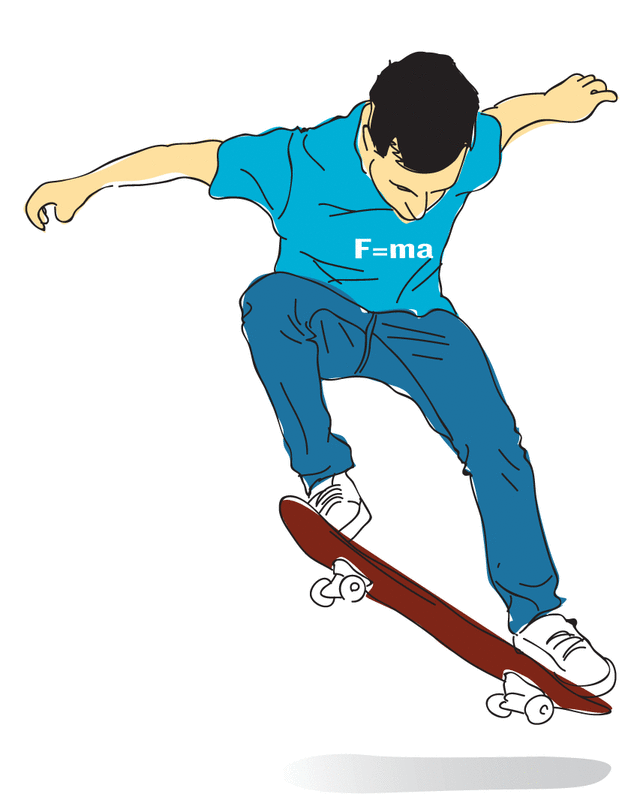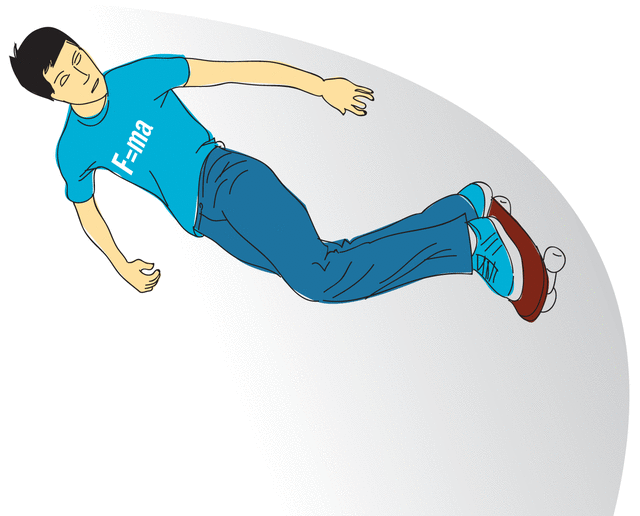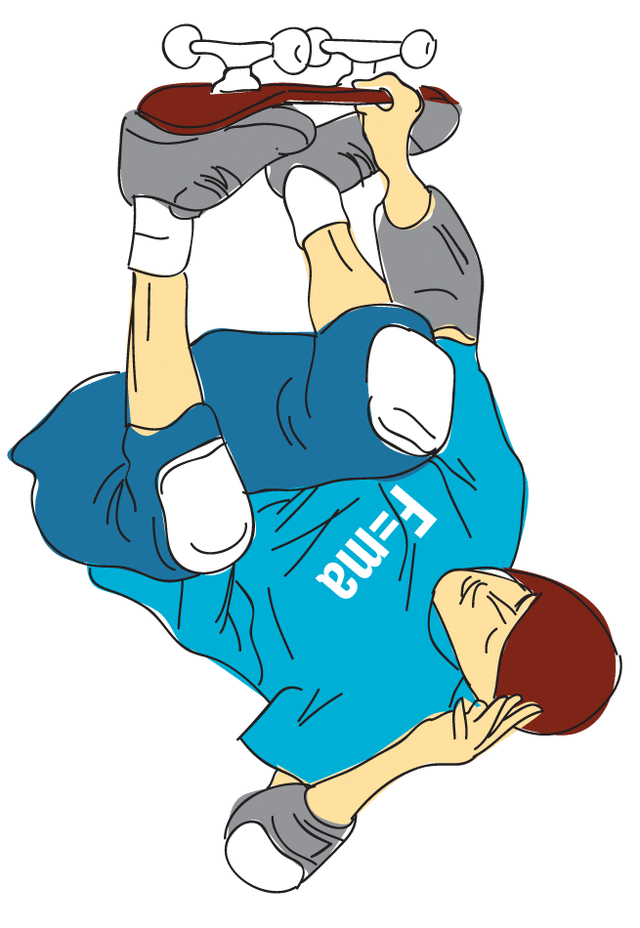Explaining Physics With Skateboards
Fifteen years ago, pro skater Tony Hawk nailed the world’s first “900,”—a near-impossible vertical cyclone spin, seemingly breaking the laws of physics in the process. But, as Hawk is quick to point out, he did nothing Isaac Newton could not explain.
Tony Hawk—Rad Science runs through May 4 at OMSI“As skateboarders, we take science for granted,” he says. “And onlookers tend to think that we ‘defy’ gravity and physics with some of the more complicated skate maneuvers.” So this spring, Hawk helps roll out an interactive OMSI exhibit, which includes a 7,000-square-foot skate park, illuminating the universal order behind his wheeled trickery. Science, brah!

The Ollie
A basic jump where the skater and the board leave the ground together, the board seemingly attached to the skater’s feet.
Principles: Gravity, pivots, momentum
The rider kicks the tail of the skateboard on the ground with her back foot while springing her body up, causing the board’s nose to rise off the ground. The rider then slides her front foot forward in a rolling motion, pivoting the board to level out in midair.
IT’s LIKE: Jumping up on one foot to propel yourself sideways.

Pumping
How skaters gain and maintain speed without foot-pushing the board forward.
Principles: Center of mass, inertia, acceleration
While moving along a flat surface, the skater crouches down. As he approaches the curved surface of a ramp, he straightens his legs. Because it is difficult to stand up, the skater must do more work, increasing his overall energy. By repeating this motion in a bowl-shaped ramp, a skater can keep moving without touching the ground.
It’s Like: Straightening and bending your legs to go higher on a swing

The 900
After launching off a vertical ramp, the skater rotates his body and the skateboard through two and a half 360-degree rotations before landing back on the ramp.
Principles: Kinetic energy, angular momentum
Once airborne, the skater harnesses his kinetic energy (motion gained from launching up and off the ramp). As he twists his torso to start the spin, he tucks his body in to make himself smaller. Since his spinning momentum is always conserved, any decrease in the body’s radius leads to an increase in his spinning speed. And the faster he spins, the more possible rotations before gravity pulls him down to the ramp.
IT’s LIKE: Pulling your limbs in while spinning on an office chair




